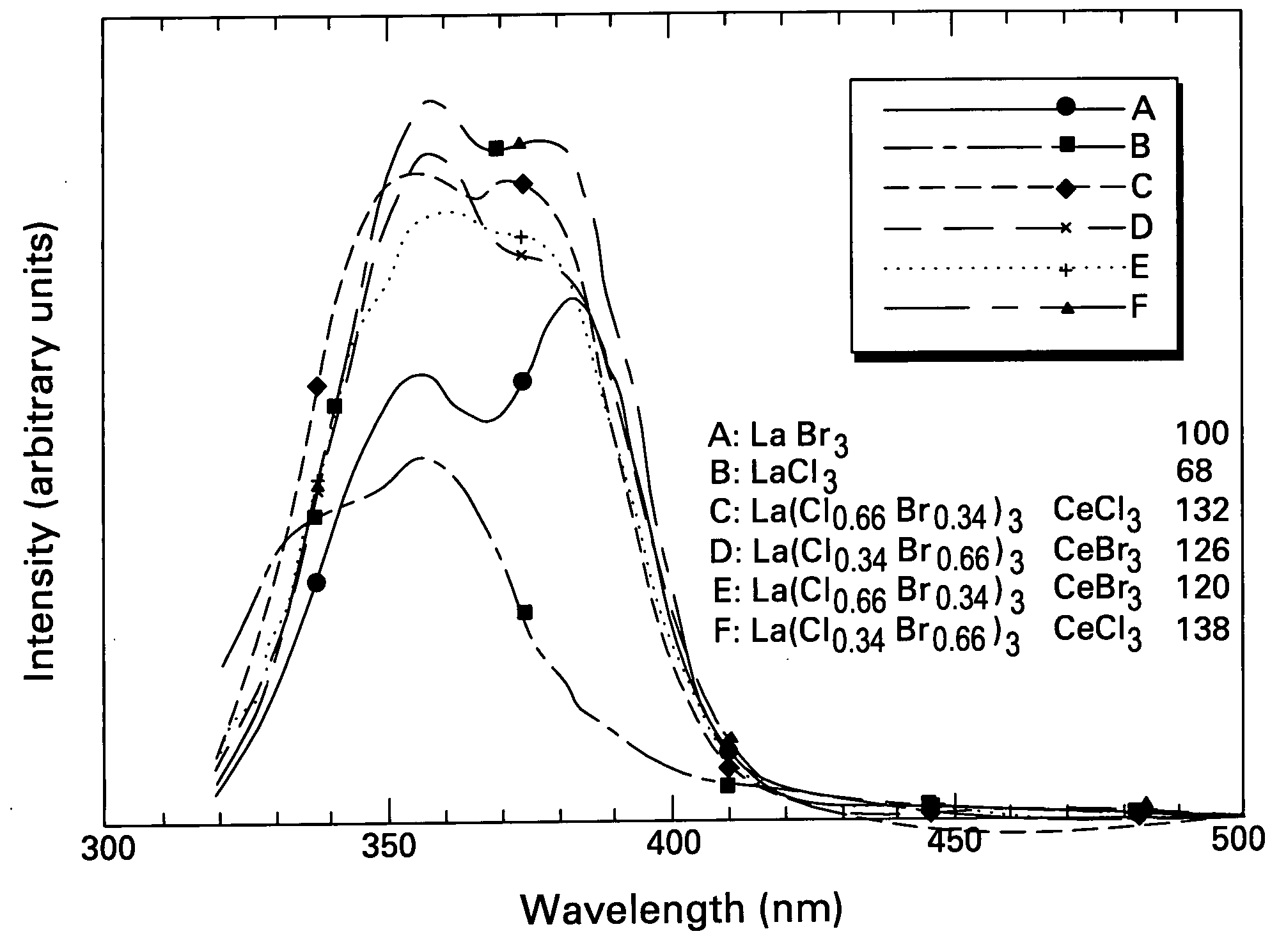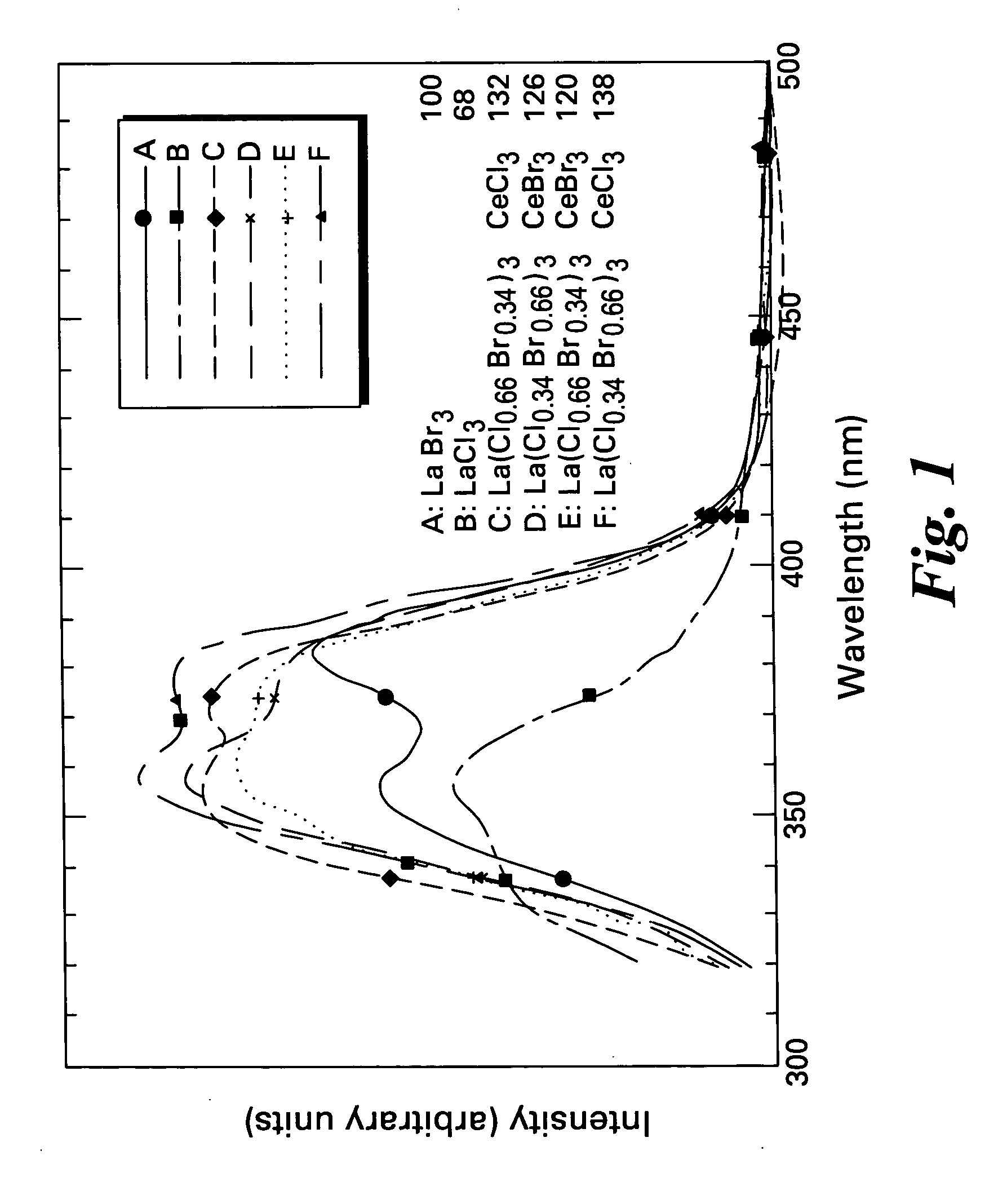Scintillator compositions, and related processes and articles of manufacture
- Summary
- Abstract
- Description
- Claims
- Application Information
AI Technical Summary
Benefits of technology
Problems solved by technology
Method used
Image
Examples
examples
[0057] The example which follows is merely illustrative, and should not be construed to be any sort of limitation on the scope of the claimed invention.
[0058] Six scintillator samples were examined for light output analysis. Sample A was lanthanum bromide (LaBr3), obtained from a commercial source. Sample B was lanthanum chloride (LaCl3), obtained in the same manner. Each of these samples served as controls.
[0059] Sample C was a composition within the scope of the present invention. The composition was a cerium-activated solid solution of lanthanum chloride and lanthanum bromide. The composition was prepared by dry mixing cerium chloride with lanthanum chloride and lanthanum bromide. (All materials were commercially-obtained ). Mixing was carried out in an agate mortar and pestle. The uniform mixture was then transferred to an aluminum crucible, and fired at a temperature of about 600° C. The heating atmosphere was a mixture of 0.5% hydrogen and 99.5% nitrogen. The final molar rat...
PUM
 Login to View More
Login to View More Abstract
Description
Claims
Application Information
 Login to View More
Login to View More - R&D
- Intellectual Property
- Life Sciences
- Materials
- Tech Scout
- Unparalleled Data Quality
- Higher Quality Content
- 60% Fewer Hallucinations
Browse by: Latest US Patents, China's latest patents, Technical Efficacy Thesaurus, Application Domain, Technology Topic, Popular Technical Reports.
© 2025 PatSnap. All rights reserved.Legal|Privacy policy|Modern Slavery Act Transparency Statement|Sitemap|About US| Contact US: help@patsnap.com


